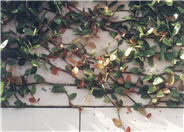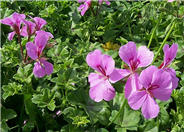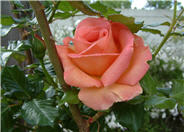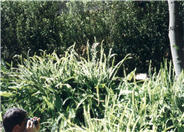
Common name:Creeping Fig
Botanical name:Ficus pumila
This is one of the few plants that can attach itself securely to wood, masonry, or metal. Because there is no limit to its size, it can overcome an entire buliding. It is most often found in colder climates. This vine will not climb on the south or west walls.

Common name:Ivy Geranium
Botanical name:Pelargonium peltatum
Clouds of single or double flowers are produced from spring through fall on this plant, which should be planted in areas that receive afternoon shade in warm inland valleys. Foliage resembles ivy (pointed lobes) and are bright green and glossy. Ivy Geranium looks great in hanging baskets, window boxes or in planters. Do not use for erosion control.

Common name:Hybrid Tea Rose (selections)
Botanical name:Rosa Hybrid Tea varieties
These shrubs and vines are the most loved in the Western USA and are very resilient. They come in a wide variety of sizes and colors and are easy to maintain with proper care. They can be used in a water-conserving garden with careful attention to irrigation practices.

Common name:Southern Sword Fern
Botanical name:Nephrolepis cordifolia
Nephrolepis cordifolia is tough and easy to grow. This fern has bright green, narrow, upright fronds in tufts to 2'-3' tall. Fronds have closely spaced, finely toothed leaflets.

Common name:Summer Lobelia
Botanical name:Lobelia erinus
This short ground cover has small green leaves with blue or red flowers that bloom in the summer and fall.
| Designer: Homeowner | Fairyland Walkway of Color |
Photographer: GardenSoft |
Soils and Compost:
Incorporate compost 6" into your soil to retain water, reduce compaction, feed earthworms, and provide valuable nutrients to your plants.
Water Saving Tip:
Apply a layer of mulch around plants to reduce moisture loss.
Choose organic mulches, such as shredded bark, compost or aged sawdust.
Integrated Pest Management:
Attract, or buy beneficial insects such as ladybugs and lacewings to control pest outbreaks in your garden.

